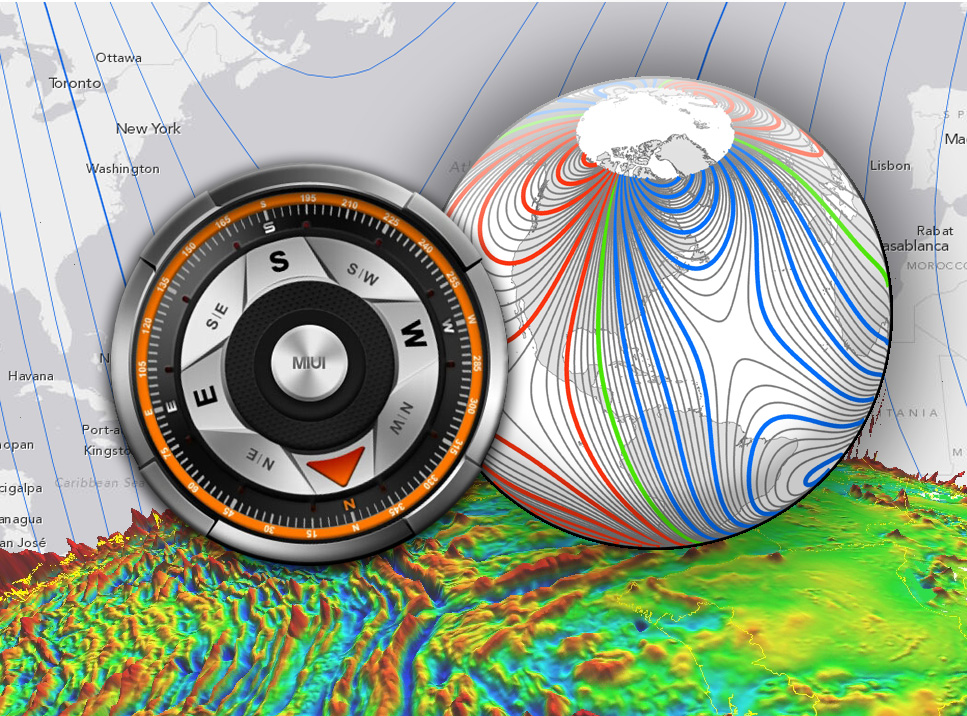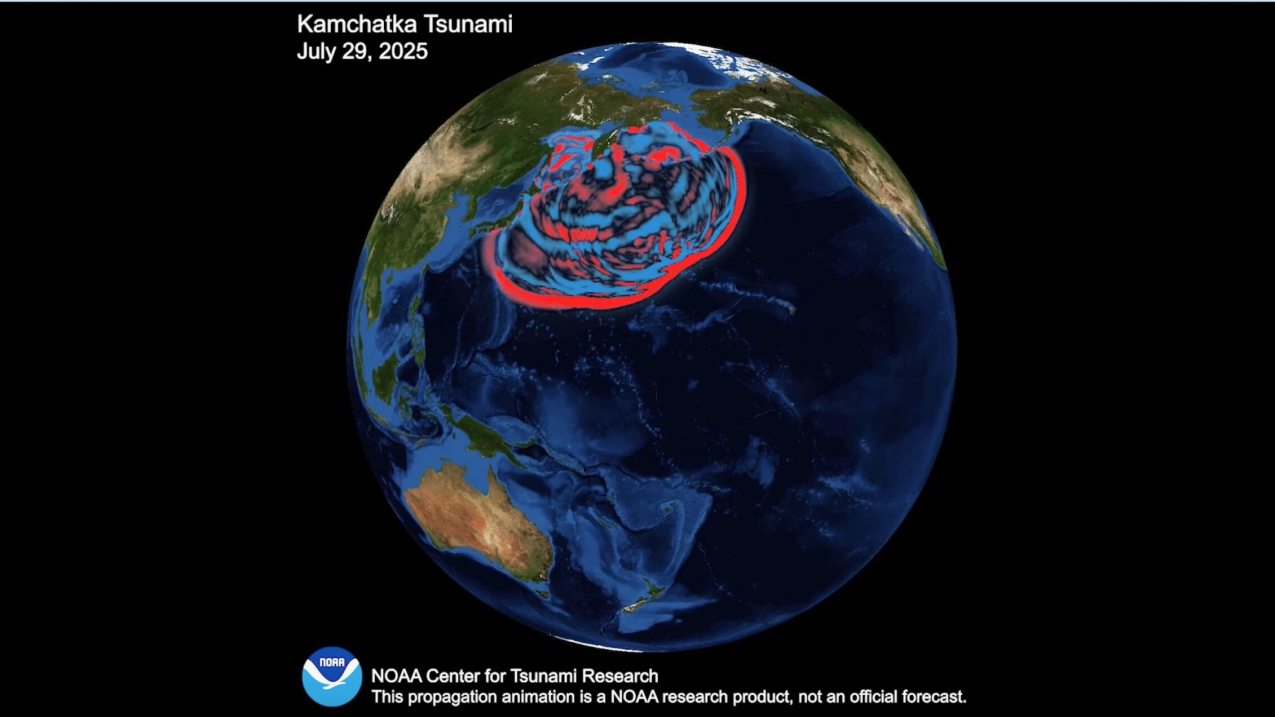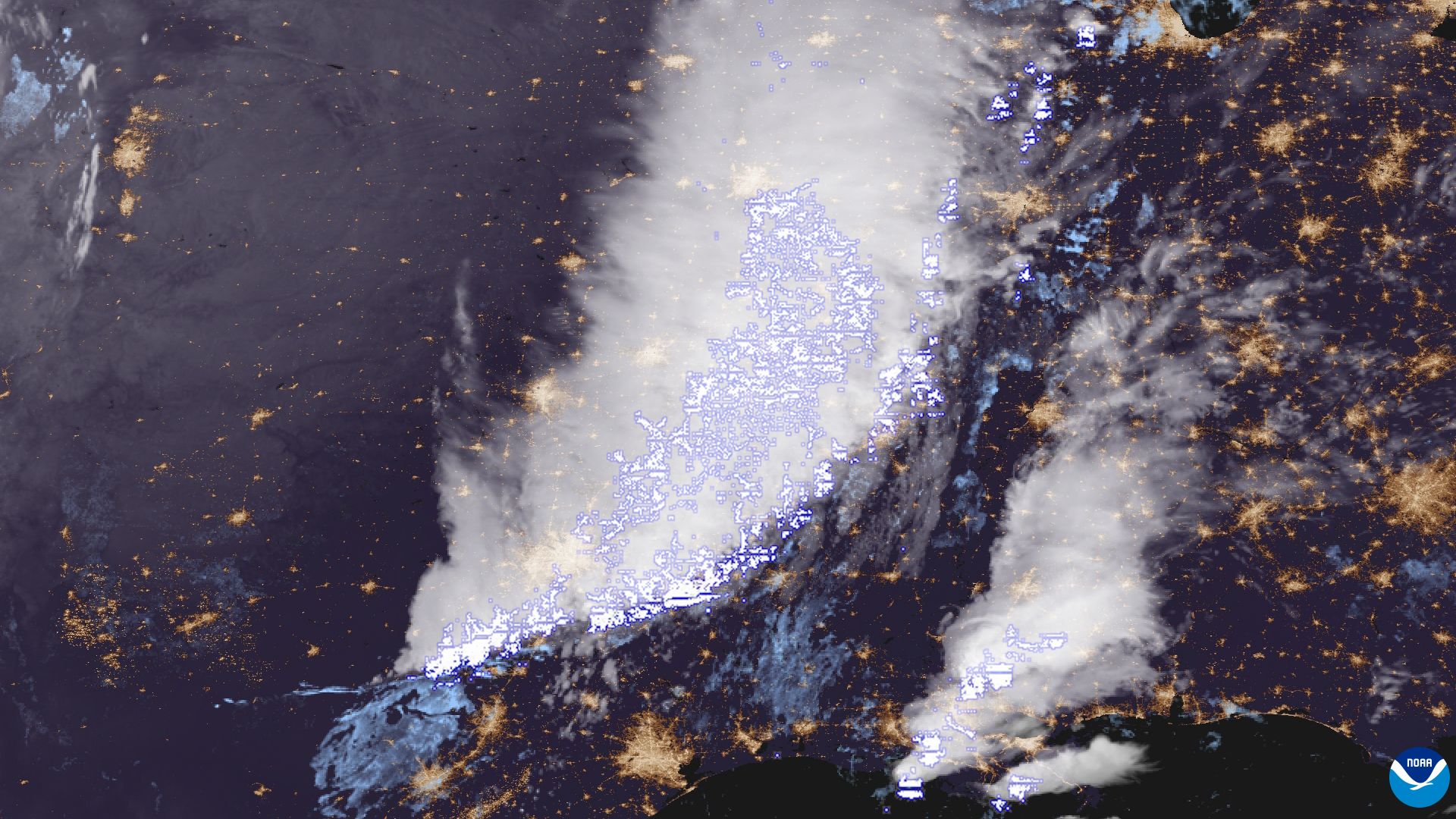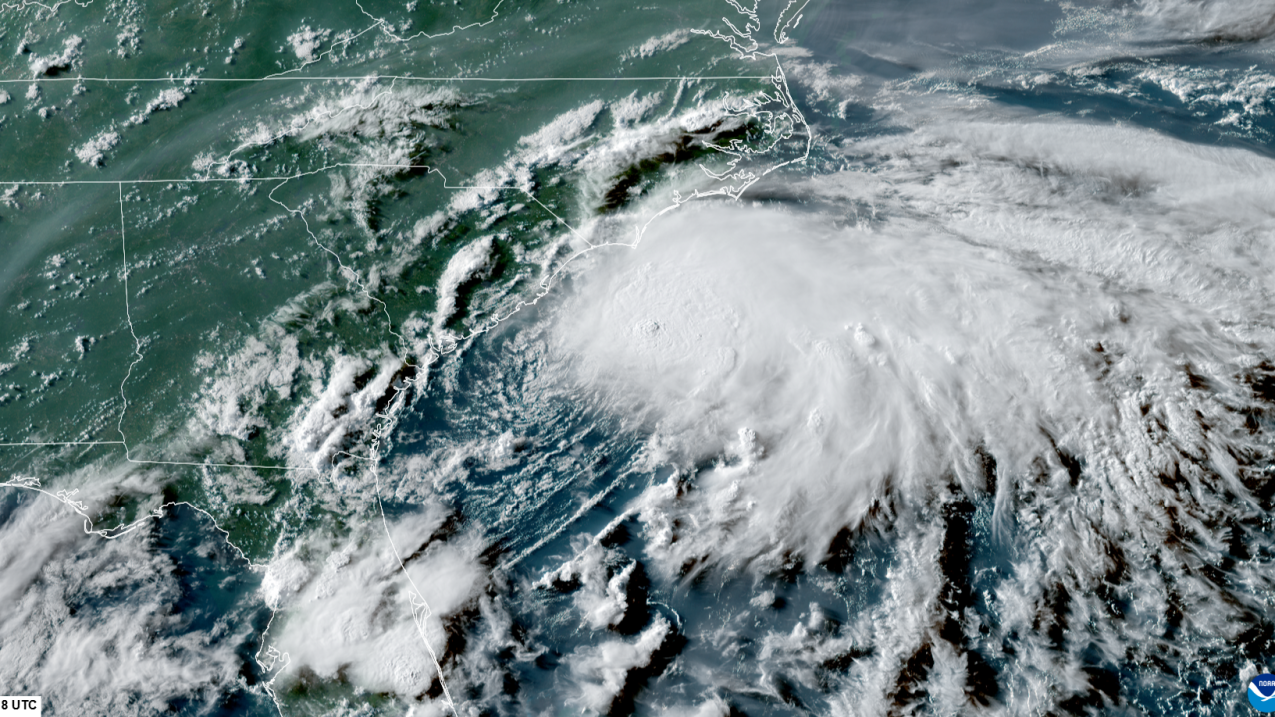How Fish Keep The Peace in a Noisy Ocean

August 11, 2025

Ever wonder how fish manage to hear each other in a noisy ocean? Picture a crowded cocktail party. Everyone’s talking at once—but instead of chaos, people instinctively adjust: spreading out or speaking at different pitches. It’s a social dance that helps everyone be heard.
Underwater, something similar might be happening—at least in some places.
A new study published in Marine Ecology Progress Series offers one of the most detailed looks yet at the “who, when, and where” of fish chorusing in national marine sanctuaries offshore California. NOAA Dr. Nancy Foster Scholar Ella B. Kim and her co-authors analyzed more than 18 collective years of passive acoustic recordings from three adjacent national marine sanctuaries—Monterey Bay, Chumash Heritage, and Channel Islands. Their findings reveal distinct seasonal, spatial, and nocturnal patterns tied to reproductive and habitat preferences for five chorusing species: plainfin midshipman (Porichthys notatus), bocaccio rockfish (Sebastes paucispinis), white seabass (Atractoscion nobilis), and two mystery fish that have not yet been identified (referred to as UF440 and UF310).
While the possibility of acoustic niche partitioning—where species “take turns” or call at different frequencies—adds an intriguing layer to the data analysis, the study’s core contribution is foundational: simply identifying which fish are chorusing, where, and when. With more than 34,000 fish species in the ocean and only about 1,000 linked to known vocalizations, each new match is a major step in decoding the underwater soundscape.
That sense of wonder—and the urgency to understand marine life in places designed to protect it—is what drew Kim to study fish chorusing in national marine sanctuaries. “As scientists, we get excited about the things that are still mysterious. People have spent decades studying whale and dolphin sounds, but for many fish species, we don’t even know what sounds they make. It’s so cool to find these new sounds and think, ‘Whoa, what is that—and who made it?'”
She adds, “National marine sanctuaries are biodiversity hotspots and places we’re actively trying to protect. Building a baseline understanding of which species are vocalizing—and how their activity varies across time and place—is especially important for helping fish populations remain stable. There’s really no better place to study fish chorusing than in a marine protected area that hosts a cacophony of fish sounds.”
What Is Fish Chorusing?
Many fish species produce repetitive, rhythmic calls during spawning season—a behavior called chorusing. These vocalizations often serve as underwater mating songs and involve large numbers of fish singing at the same time. Because sound travels faster than light in water, chorusing is an efficient way for fish to communicate over long distances.
Until recently, scientists didn’t know much about how multiple species shared these underwater soundscapes within national marine sanctuaries in California—areas of high biodiversity where species protected under the Endangered Species Act coexist with those that are not federally listed.
The new study shows that not only do fish chorus in specific places and times, but they also appear to partition the soundscape—singing in different frequencies to avoid acoustic interference.

“This kind of ecological research that uses long-term time-series data is instrumental for informing conservation that benefits multiple fish species,” said Dr. Lindsey Peavey Reeves, the West Coast region sanctuary soundscape monitoring project coordinator and a co-author on the study. “It’s especially applicable for fish that support livelihoods, food security, and recreation that appear to share the same habitats at the same time within a sanctuary, year after year. We are already incorporating these fish chorusing findings into Sanctuary Watch, to help track trends and better understand how to manage these ecosystems for multiple benefits.”
Same Ocean, Different Voices: Meet the Chorusing Cast
Researchers detected choruses at nine long-term listening stations across the three national marine sanctuaries. These passive acoustic recorders, deployed year-round over several years, captured the underwater “conversations” without disturbing the animals.
Among the most fascinating findings was how each species seemed to claim a unique corner of the acoustic spectrum:
Plainfin Midshipman
Found in shallow, coastal waters and known for their powerful, low-pitched hums, these fish chorused in summer and at night.


White Seabass
Spawning higher in the water column, white seabass sang during the same timespan as midshipman, UF440, and bocaccio, chorusing day and night, with less consistency.


Bocaccio
This deep-dwelling rockfish wasn’t previously known to chorus. Their near-constant presence at some sites suggests that some recording locations may be key spawning sites


Listen to more recordings on the SanctSound Data Portal—an interactive platform for exploring ocean soundscapes.
Though these fish occupy the same general geographic region, they inhabit slightly different environments—bocaccio in deeper waters, white seabass in the midwater column, and plainfin midshipman in shallow coastal and intertidal zones. Still, they seemed to minimize talking over one another by vocalizing at different frequencies, suggesting a possible case of acoustic niche partitioning—in other words, dividing up the soundscape so each species can be heard by its own kind. This strategy, also observed in birds and frogs, offers an evolutionary advantage that’s especially critical during spawning season, when timing is everything.
Among the most surprising revelations was new behavioral insight about bocaccio rockfish. Kim explains that “We knew bocaccio produced individual calls, but we didn’t know they chorused. At first the chorus was a mysterious signal, but when we dove in deeper, we realized it was bocaccio!”
Another fascinating finding involved frequency modulation in midshipman choruses. In some recordings, their low-pitched hums showed wavering or wobbling patterns—something scientists hadn’t seen before.
“Plainfin midshipman chorus for hours on end,” explains Peavey Reeves. This “funky frequency modulation,” as Kim calls it, may indicate acoustic masking (when other species’ calls interfere) or vocal fatigue from prolonged calling. Either way, it’s a reminder of how dynamic and complex underwater communication really is—and how much we still have to learn.
A New Tool for Ocean Management
Passive acoustic monitoring allows researchers to study vulnerable fish populations noninvasively—without needing to see or collect the animals. It’s a low-cost, high-impact tool for tracking hard-to-monitor species, and it’s already proving valuable.
One of the most active chorusing sites—station MB05 in Monterey Bay National Marine Sanctuary—is located off the Big Sur coast in La Cruz Canyon, near a network of rockfish conservation areas. The data strongly suggest it’s a key spawning ground, with bocaccio rockfish vocalizing year-round at this location.

Studies like these are timely, as boat noise increases in coastal waters. Research has shown that vessel traffic can disrupt plainfin midshipman vocal behavior—reducing the number of calls and altering their frequency, which may interfere with mate attraction and territory defense.
Bocaccio populations, once severely overfished—especially in Southern California—are now recovering thanks to conservation measures and fishing regulations. Their presence in national marine sanctuary soundscapes—especially during spawning seasons—makes them an important species for acoustic and ecosystem monitoring.
These findings could help sanctuary managers time protections around noisy human activities—like shipping and underwater construction—to avoid disrupting fish spawning.
“By linking fish vocalizations with specific locations and seasons, we can help managers prioritize protection efforts where they’ll have the greatest impact,” says Kim. “For example, since there are many fish chorusing during summer nights, minimizing human-made noise in these areas at the right time could help fish populations thrive.”
Singing Fish, Shared Sanctuary
NOAA’s national marine sanctuaries in California are hotspots for biodiversity—not just visually, but acoustically. This study proves that by simply listening, we can uncover critical patterns in fish reproduction, identify priority areas for protection, and deepen our understanding of how different species coexist.

The application of this data will be especially valuable in the newest national marine sanctuary on America’s West Coast, Chumash Heritage National Marine Sanctuary: “We hope to work within the unique co-stewardship structure of the sanctuary to establish new listening stations within its boundaries. The information from this study will now help us to target specific fish and habitats,” says Peavey Reeves.
While fish chorusing research is helping managers fine-tune conservation strategies in marine protected areas, it is also creating opportunities for community engagement—making the invisible lives of fish more accessible to the public.
“We recently produced an education toolkit for elementary and middle school students to explore fish sounds in national marine sanctuaries,” Kim says with a gleam of excitement. “It’s completely interactive—introducing students to fish acoustics, how and why fish produce sound, and sparks a sense of wonder.”
You can even listen to various natural and human-made underwater sounds at Monterey Bay National Marine Sanctuary’s two visitor centers.
Listening Ahead
As interest in ocean soundscapes grows, passive acoustic monitoring will continue to play a vital role in marine science and sanctuary management under changing ocean conditions. Studies like this one highlight the importance of long-term data collection, collaborative research, non-extractive scientific methods, and the need to safeguard not just special places—but the natural processes that keep them thriving.
These findings show that national marine sanctuaries off the coast of California are protecting critical habitat for chorusing fish. Simply listening offers a powerful, cost-effective way to monitor populations and guide smarter conservation decisions for years to come.
This research was supported by NOAA’s Office of National Marine Sanctuaries under the authority of the National Marine Sanctuaries Act (16 U.S.C. § 1431 et seq., Section 309), which authorizes the coordination of scientific research and long-term monitoring of sanctuary resources. Additional support was provided by the NOAA Dr. Nancy Foster Scholarship Program, Scripps Institution of Oceanography, the National Marine Sanctuary Foundation, Monterey Bay Aquarium, Monterey Bay Aquarium Research Institute, and the U.S. Navy.
Rachel Plunkett is the content manager and senior writer/editor for NOAA’s Office of National Marine Sanctuaries.
Ella B. Kim is a NOAA Dr. Nancy Foster Scholar and a doctoral candidate in the Acoustic Ecology lab at Scripps Institution of Oceanography. She is the lead author of the scientific paper discussed in this article.
Dr. Lindsey Peavey Reeves is the West Coast Region sanctuary soundscape monitoring project coordinator and a co-author of the scientific paper discussed in this article.












